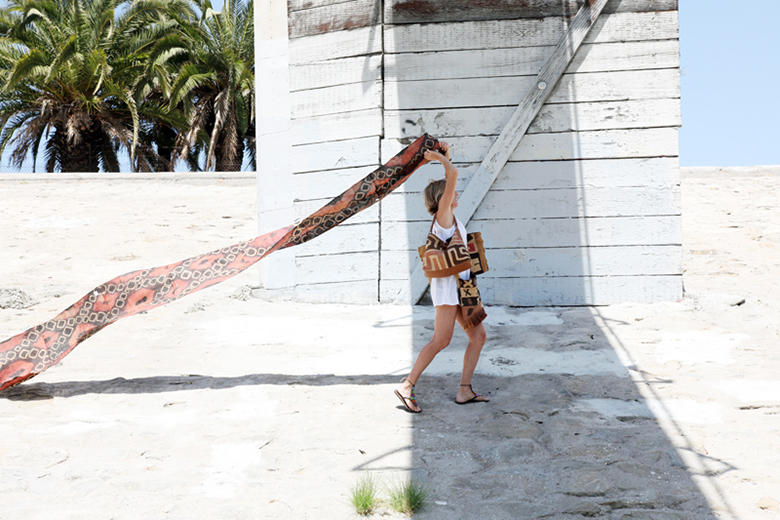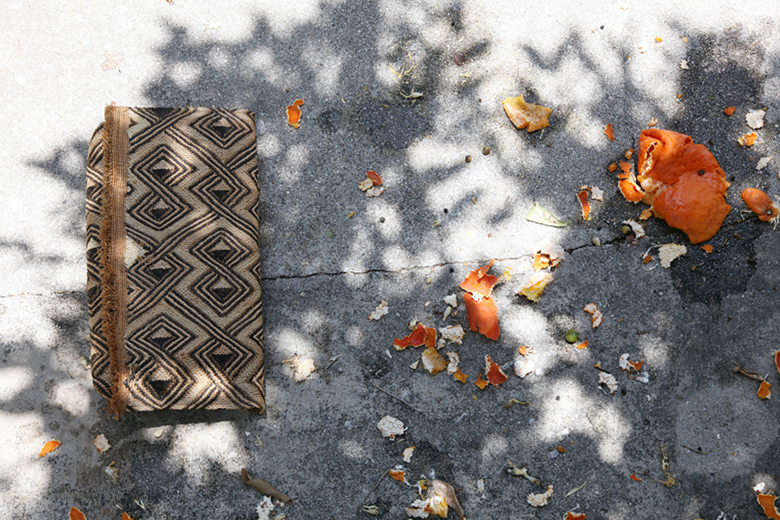Profile : Linda Hackett’s Slow Design
Slow design is at the core of the Global Girls brand, which seeks to preserve indigenous crafts—even if that means production proceeds at the pace of the handmade, one careful stitch or embellishment at a time. “I think handmade items convey one’s spirit to a certain extent,” says founder Linda Hackett. “It’s kind of a connection on an aesthetic level, but also to the artisan who makes this art.”
Hackett has long been hooked into a design-minded global community. She studied in Bolivia at 16 and then at Brazil’s University of São Paolo. In her early 20s, she traveled around South America as a buyer for a Singapore-based décor company. She later worked as a wardrobe stylist and costume designer for television, film, and theatre—at one point basing herself in Mexico, an experience that led to a separate business venture, exporting decorative folk art from the country.
“Global Girls, represented the
intermingling of Hackett’s design interests
and her desire to bring a
humanitarian component to her work”
________
It wasn’t until after a self-described “mid-life crisis” and a 2008 visit to Kenya that Hackett launched Global Girls, which represented the intermingling of her design interests and her desire to bring a humanitarian component to her work: Global Girls supports women artisans, offering them sustainable employment for their work. “In Africa, women truly are the backbone of the community,” Hackett says. “Empowering them is rewarding and life-changing.” She now returns to the country every six months, for one month at a time.
It was during one of those trips to Kenya that Hackett met a Congolese refugee and textile trader named Pascaline. Along with harrowing stories of wartime Congo—Hackett has yet to travel there, due to the country’s continued unrest—Pascaline shared the art of Kuba cloth, a textile indigenous to the Democratic Republic of the Congo and a material Hackett had long admired. “Having been a textile fiend my whole life, I can’t ever remember not knowing about Kuba cloth. I’d always wanted to work with it and figure out how I could incorporate it in my designs,” she says.
 Kuba cloth is emblematic of Hackett’s slow design philosophy. An ancient art once reserved for royalty, it’s replete with intricate pattern work that necessitates production by hand. Using fine threads from palm fronds, Congolese men traditionally weave the cloth into a soft and smooth foundation. Women artisans then finish each piece, using embroidery, cowrie shells, or fabric appliqués to create the cloth’s signature geometric patterns.
Kuba cloth is emblematic of Hackett’s slow design philosophy. An ancient art once reserved for royalty, it’s replete with intricate pattern work that necessitates production by hand. Using fine threads from palm fronds, Congolese men traditionally weave the cloth into a soft and smooth foundation. Women artisans then finish each piece, using embroidery, cowrie shells, or fabric appliqués to create the cloth’s signature geometric patterns.
With Pascaline’s guidance, Hackett further explored Kuba design. She appreciated the lengthy production process—even a small piece could require a month’s work—and the lengthy trip Pascaline endured to bring the fabric to Hackett from a remote Congolese village (seven days, by boat). Hackett developed an appreciation for what constituted a fine creation: a tightness of weave, a seamless joining of fabric, an even stitching, a linen-like softness, or a particularly well-executed pattern.
“I used to go through
piles and piles of the cloth and just be
paralyzed with indecision
because they were all so amazing”
When in Kenya, Hackett meets with visiting Kuba cloth traders like Pascaline, sifting through hundreds of pieces at a time. “I used to go through the piles and piles of the cloth and just be paralyzed with indecision because they were all so amazing,” Hackett says. “Pascaline would always tell me, ‘Linda, choose what you like because your customers will follow you and your eye.’ I now buy what I love and what I feel speaks to me.”
Her selections are all one-of-a-kind creations, varying in size and shape, often a mixture of vintage and new. “Every piece is very different,” she says. When designing, she works around the shape of the fabric. “I really let the cloth speak to me in terms of what it wants to become—it could be a bag in dimensions I’ve never created before.”
“Handmade items really reflect one’s sense of artistry,
and to me, that’s really soulful.”
________
This could present a production nightmare, but she’s lucky to have found partners—such as her bag maker—who believe in her concept, which is essentially a made-to-order model. “No bag maker wants to deal with Kuba cloth,” Hackett says. “They all hate that each bag is one-of-a-kind. Bag makers want production: 100 of one style, at least. I’m extremely lucky to have found someone who will work with me, employing old-world techniques to do so. [Designing and producing] one by one is extremely rare in today’s world. It is just not how things are done.” Undeterred, Hackett moves forward piece by and piece, all the while upholding the textile’s original intent and integrity. “Handmade items really reflect one’s sense of artistry,” she says. “And to me, that’s really soulful.”
Photographed by Cydney Puro







